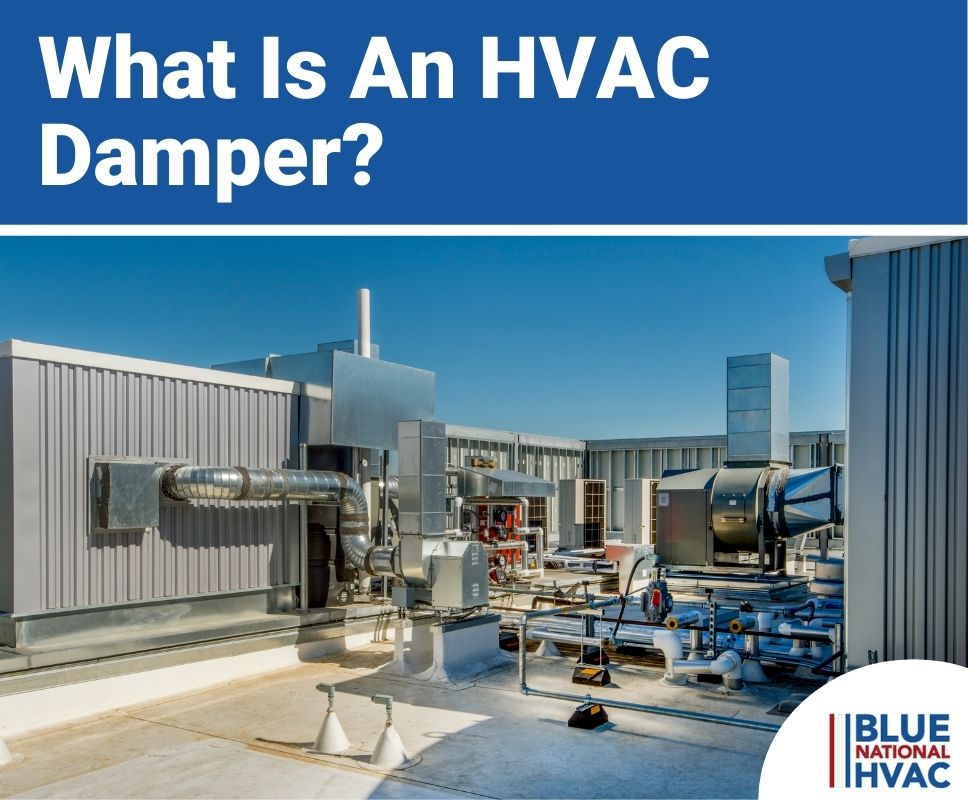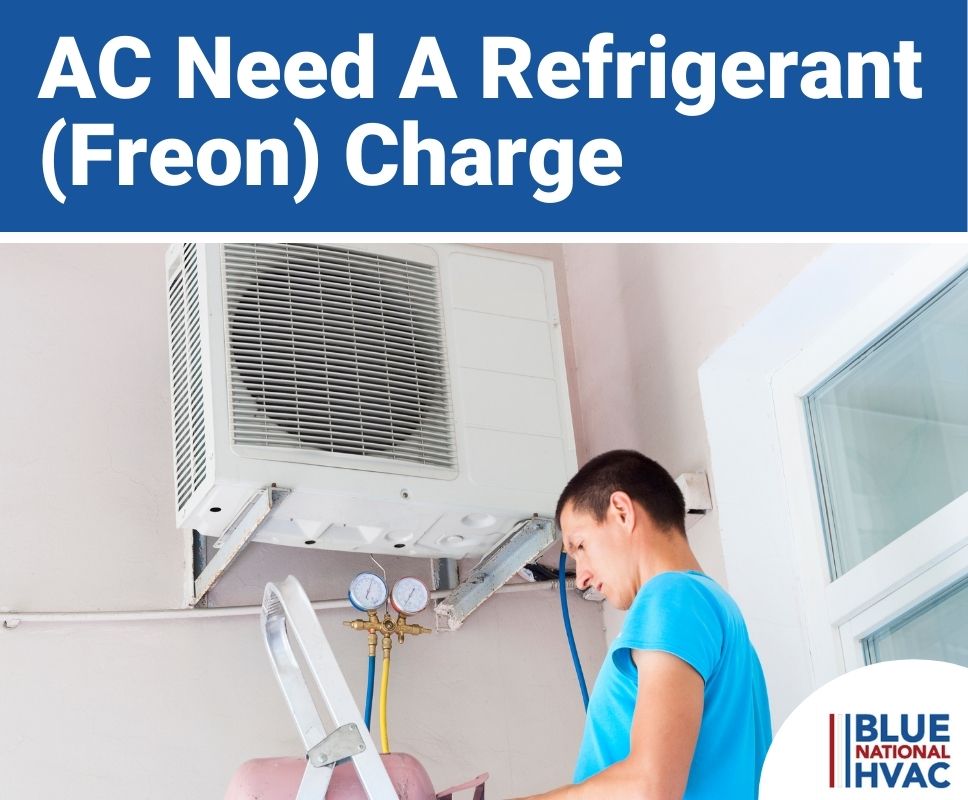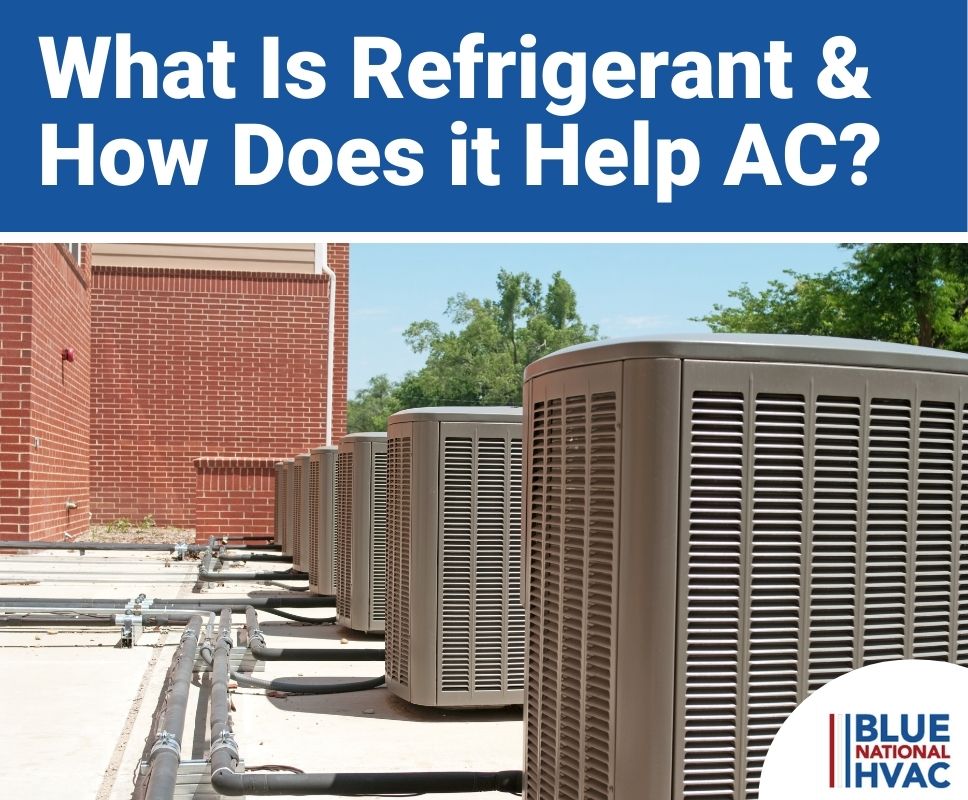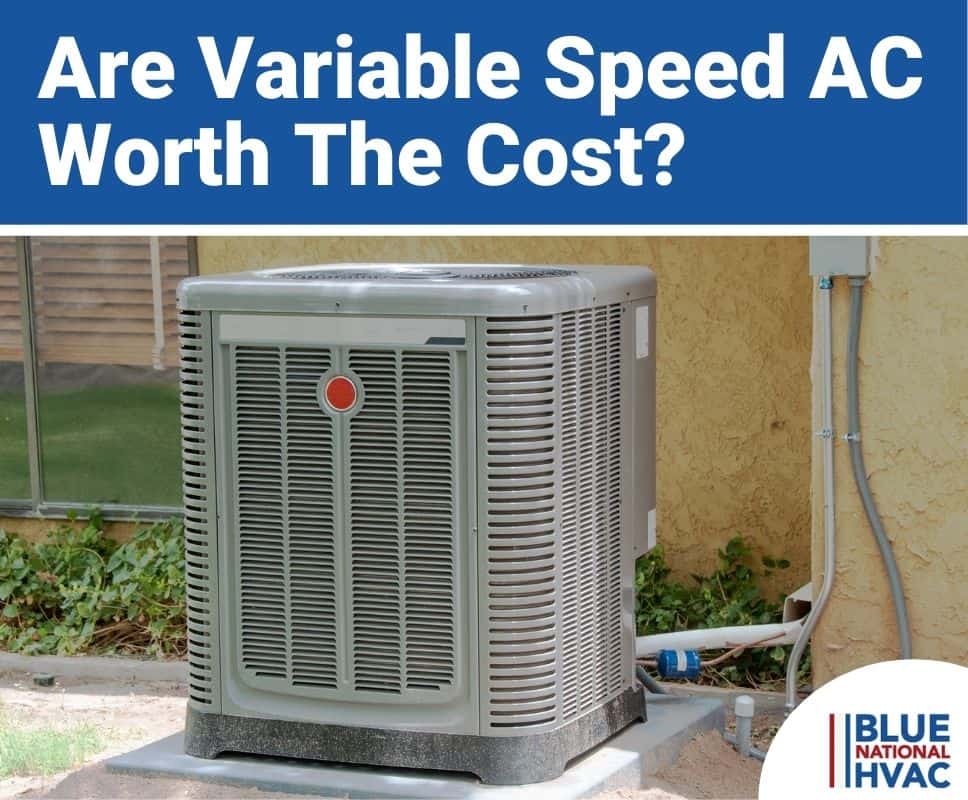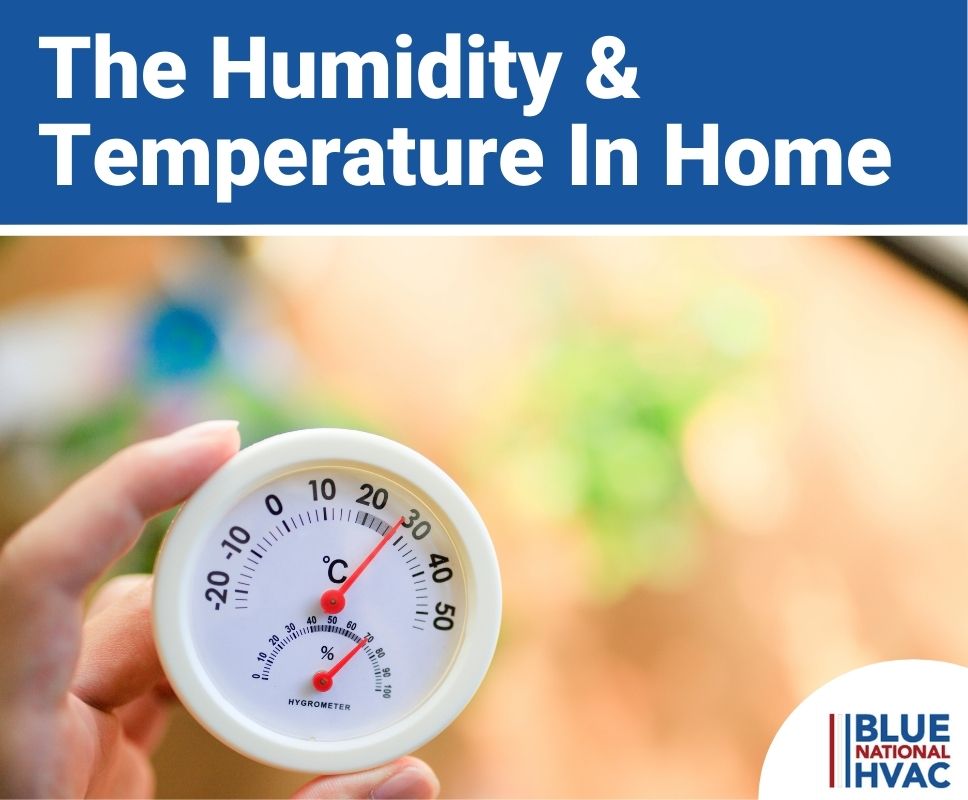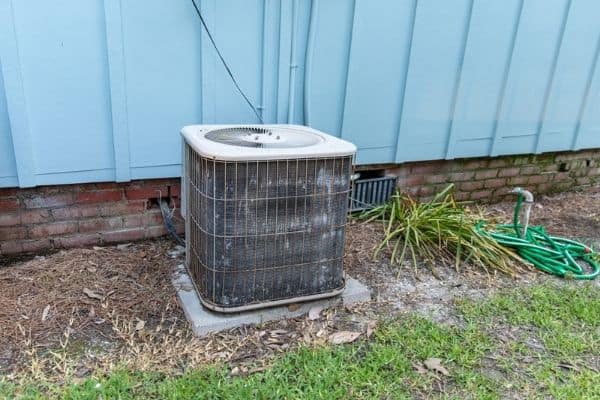What are HVAC Dampers?
An HVAC damper is a mechanical metal plate that can be adjusted to block airflow through ductwork. They are used to regulate the airflow to various rooms in a house.
HVAC dampers, sometimes called duct dampers, are either manual or motorized. If a damper in a duct is fully closed, it will block off the airflow entirely, automatically redirecting to other areas in the home.
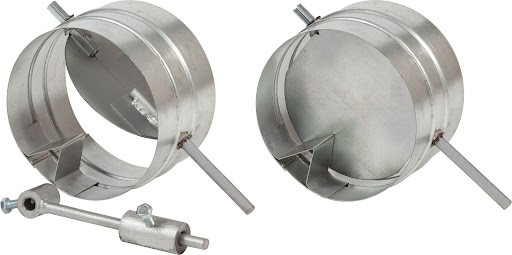
Dampers are not to be confused with supply registers, which can be opened or closed as well. Duct dampers are located deep within the ductwork, hence the name. They are closer to the main trunk of the HVAC unit and can be adjusted to make your home more comfortable and to balance the airflow rate (CFM) to the different zones in your home.
Fine-tuning, or balancing, the dampers can help reduce cold spots and hot spots in your home by varying the amount of air they receive. They help create an environment with a more balanced and stable temperature.
How do HVAC Dampers Work?
There are various types of air dampers (which we’ll get to later on), but they all perform the same function – in a zoned HVAC system, they regulate airflow to control the temperature in the home.
They work like the valve on your garden hose. If you open it all the way, more water flows out than if you just barely turned it on.
However, for dampers, airflow is being limited, which brings with it heating or cooling. HVAC dampers are either operated manually or by a motor and are commonplace in HVAC systems for climate control.
Manual Dampers
Manual dampers work just how they sound – the homeowner has to adjust the damper to regulate the airflow to a certain zone in the home. Typically, manual dampers don’t have to be changed very often.
Sometimes they just need to be adjusted seasonally or just one time right after you move in or get a new HVAC system to maximize the comfort in all areas of the home. The manual dampers are usually adjusted with a screwdriver, socket wrench, or a small lever outside the duct.
In fact, some HVAC professionals label the damper setting for “summer” and “winter” with a permanent marker for easier reference when adjusting seasonally.
Motorized Dampers
Motorized HVAC dampers use motors to adjust the dampers automatically, usually based on temperature changes in the various zones of the home.
In an HVAC zoning system, motorized damper controls tie back to thermostats in each zone (the room or areas connected to the same ductwork branch).
In this arrangement, all dampers and various zones work together through automation to achieve the home’s heating and cooling setpoints as programmed by the homeowner.
Where Dampers are Located
You might be wondering where the dampers of your HVAC system are located. If you don’t know where they are already, you’ve probably never had to adjust them before.
However, if you notice hot or cold spots in your home, adjusting the damper might be your solution for that.
To reiterate, dampers are on the same thing as your supply registers in each room (which can be opened or closed).
The dampers of HVAC systems are almost always located near the HVAC system itself. In other words, they’re near the indoor air handler of the furnace, air conditioning system, or heat pump, which is usually located in the basement, attic, garage, or utility closet of most homes.
Think of the HVAC system as a tree, with many branches of ductwork carrying air to all the rooms of your home. The air handler is connected to the trunk (the plenum), with the branches “branching” near the trunk.
Where these branches start is where the dampers are usually located. Be careful when you adjust dampers; you can inadvertently shut off airflow completely to a room if you don’t know what you are doing.
Additionally, if you’d like your HVAC system to be balanced (i.e., get optimal airflow into every room), give our team of expert HVAC technicians a call for help today.
Adjusting Zone Dampers
Now that you’ve located your dampers, you may want to take a stab at adjusting them.
Is your den too hot in the summer and it needs more cooled air? Maybe a tiny adjustment to the damper that supplies it with cold air from your air conditioner could do the trick.
Unfortunately, adjusting dampers in your home can sometimes be unwieldy. For example, if one of your dampers is barely open and you adjust it to fully open, the rest of the rooms in your home will now get slightly less airflow altogether.
Why is this? Well, to simplify things, your HVAC system blows at a set flow rate. For example, let’s say it provides 500 CFM total, and you have ten rooms that need 50 CFM each on average. If nine of the rooms are getting 55 CFM each, the last room only gets 5 CFM total.
Therefore, to get adequate airflow to the last room, you’ll have to close the other nine dampers slightly. You might adjust all nine dampers, then measure the airflow in each space. Three rooms may now be 70 CFM, and the last room might now be at 100 CFM.
It is a frustrating task as changing one damper affects all ten rooms. As such, there’s a lot of trial and error in HVAC balancing (getting the proper airflow to each room).
For an inexperienced person, balancing the duct system may take multiple hours. On the other hand, an expert HVAC technician may just need a half hour at most to get everything right.
Adjusting the Damper Seasonally
Some homes have a single damper that can be adjusted seasonally for winter and summer. It is usually a manual adjustment that can be changed with a socket wrench, screwdriver, or built-in lever.
A good rule of thumb is to adjust the damper the first day you put your thermostat into cooling mode, and the first day of the season, you put it into heating mode.
Type of HVAC Dampers
There are many types of volume balancing dampers used in residential HVAC systems. Typically, they have movable plates that redirect and block off airflow the more they are closed.
Dampers are usually installed in HVAC zone control systems but can show up in all types of HVAC systems. While there are many types of dampers on the market, they all perform the same function – limit or increase airflow to optimize temperature control of a zone or room.
Here are the most prevalent types of HVAC dampers.
Guillotine Dampers
Guillotine dampers sound dangerous and may bring up thoughts of the French Inquisition, but we promise these aren’t that type of guillotine.
A guillotine damper works by moving a piece of sheet metal up and down vertically, blocking the airflow as it traverses from the top of the duct to the bottom.
When the guillotine is fully down, the air duct is completely closed and blocks the airflow. When it’s all the way up, the air can flow freely through the ductwork, unobstructed.
Inlet Vane Dampers
Inlet vane dampers are not commonly used in residential air conditioning or heating systems. Instead, they are used primarily on commercial and industrial HVAC systems on fan inlet applications to control pressure and ventilation better.
Inlet vane dampers have many blades that come out of a central hub, like the petals on a flower.
Each blade can rotate 180 degrees to become entirely open, fully closed, or anywhere in between. This arrangement of blades maximizes the mixing of the air and improves the performance of the fan.
Blade Dampers
Blade dampers are one of the most simple and quiet types of HVAC dampers. They have two blades that move in opposite directions to finely meter the flow of air through the duct.
Louver Dampers
Louver dampers have a quick response time to heating and cooling demands in various zones of the home.
For this reason, they are the most commonly used damper in all HVAC systems. They have flat blades with hinges on each side that can be adjusted back and forth manually or by a motorized damper actuator.
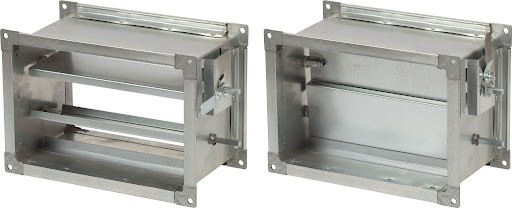
Butterfly Flat Dish Damper
The butterfly flat dish damper is another less common damper, as it is used primarily in high-efficiency systems. They contain a blade on a hinge that can be rotated to restrict the flow of air.
Some butterfly dampers can prevent backdrafts. As such, they are commonly used in buildings where fire suppression is essential.

